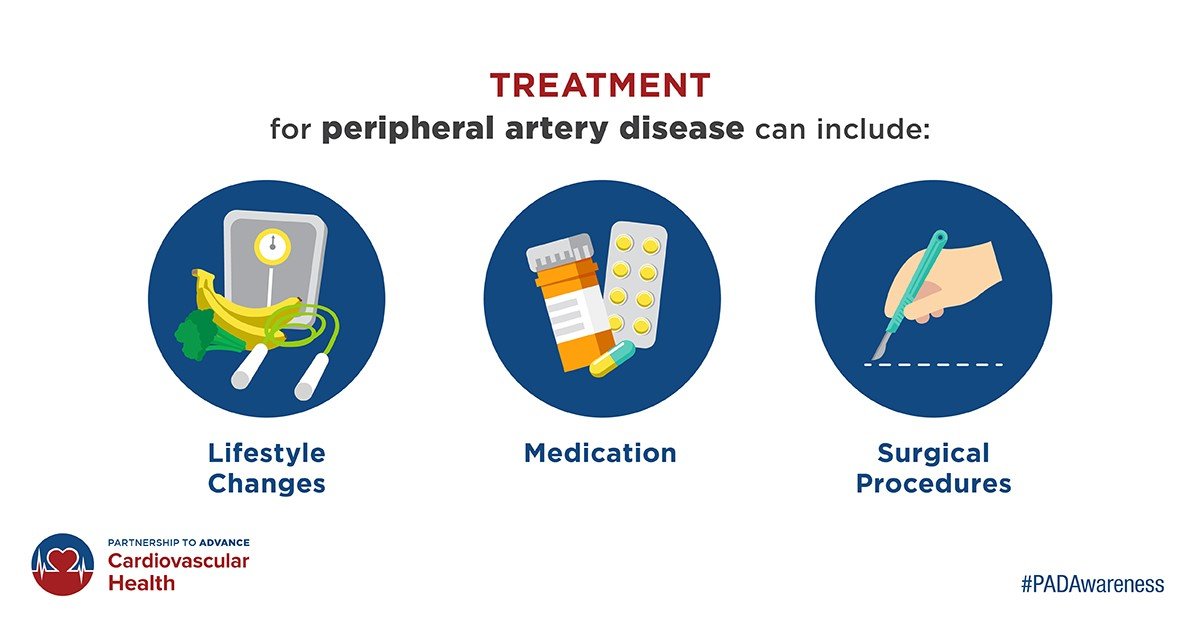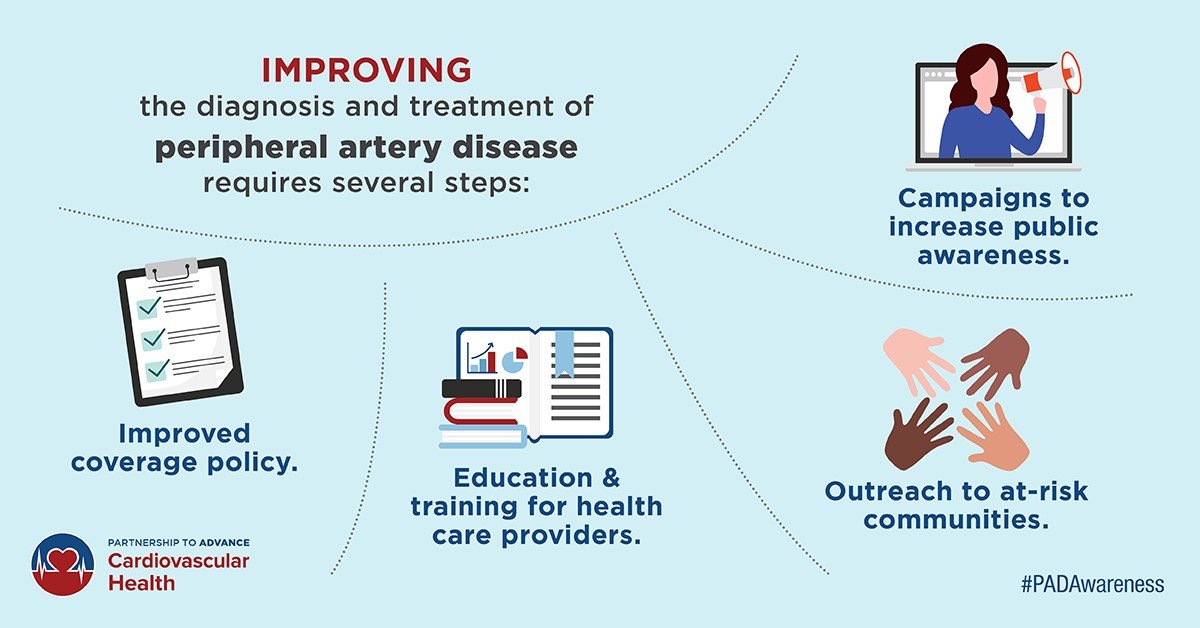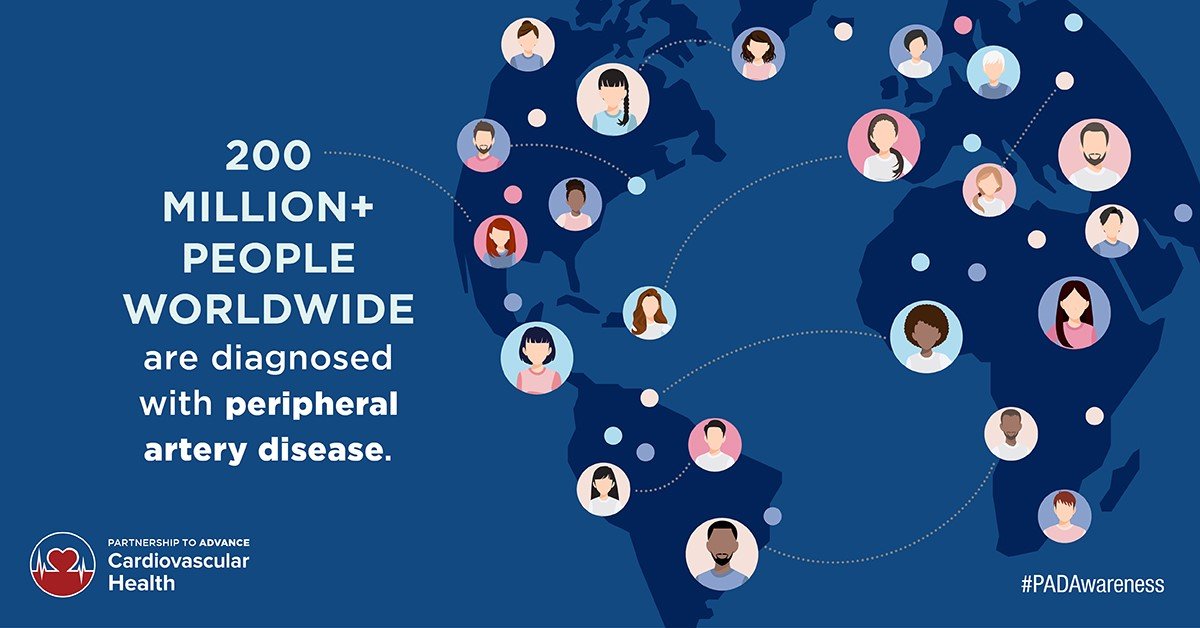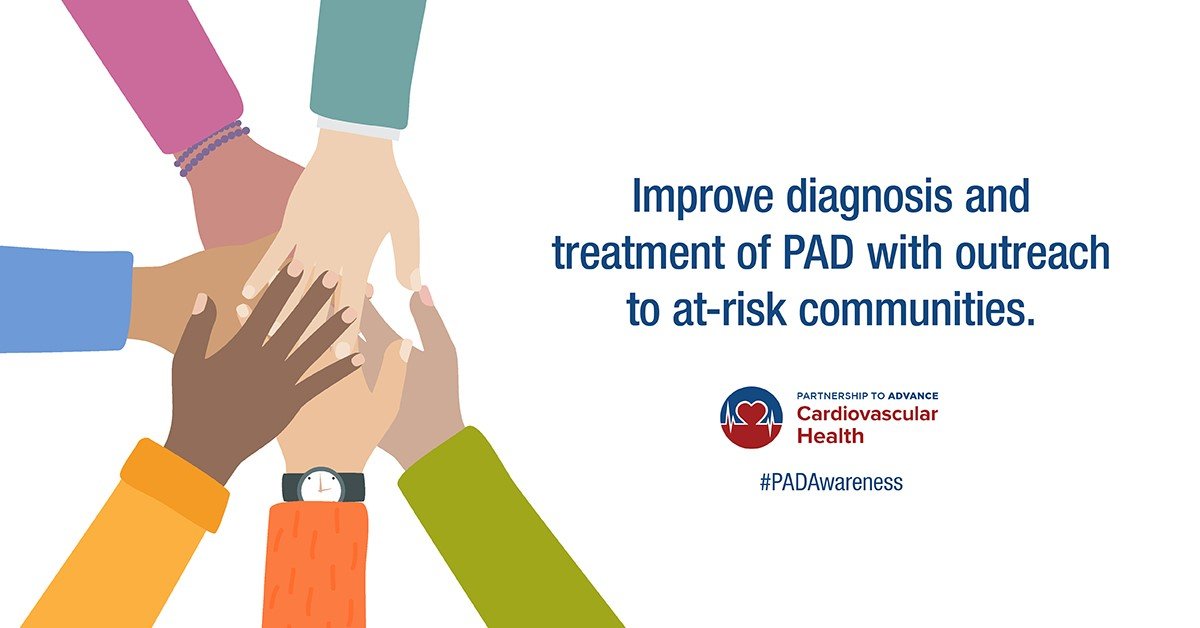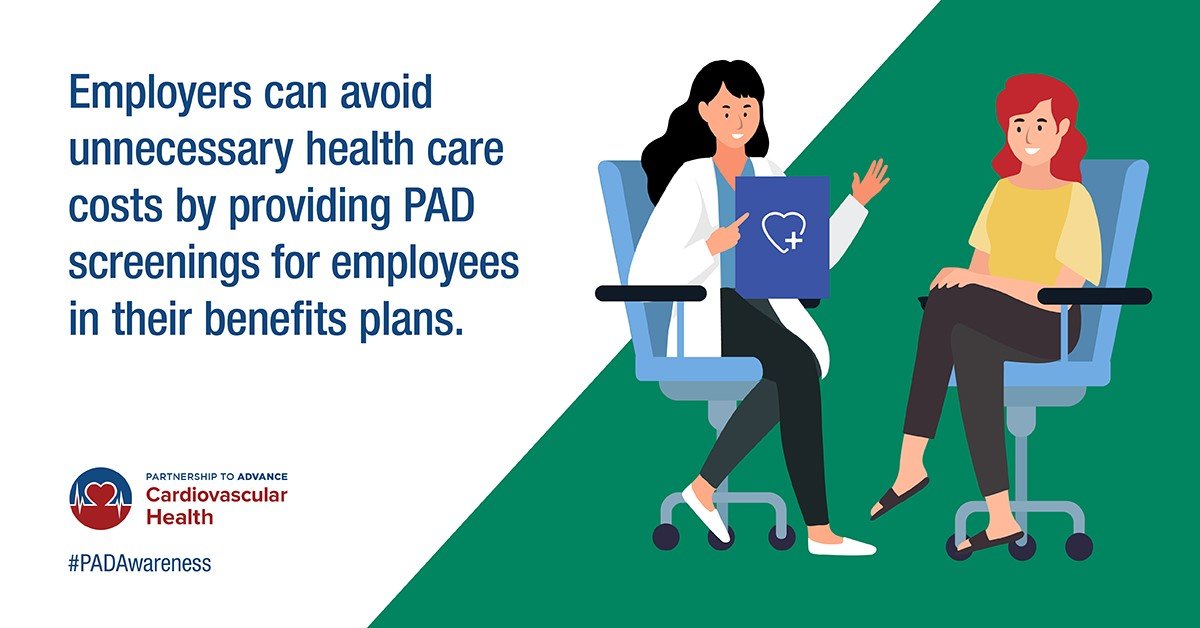Peripheral Artery Disease
Peripheral artery disease affects more than 200 million people worldwide. More commonly known as “PAD,” the disease can cause pain, impaired mobility and even the loss of limbs.
Learn more about the condition through PACH’s resources.
VIDEOS
PAPERS
BLOGS
GRAPHICS
Social Media Toolkit
Use this suggested copy to join the conversation on social media. Don’t forget to attach the social graphics from above to your post.
Hashtags: #PAD #PADAwarnessMonth #PADAwareness #cardiohealth #access #PADscreening
Tags: @advcardiohealth
#PAD starts with mild or no symptoms. We join @advcardiohealth to advocate for increased #PADscreenings to catch #PAD while it can be easily managed. #PADAwarenessMonth
Painful leg cramping or changes in the skin are usually the first signs of #PAD. Talk to your doctor about #PADscreeing. Learn more: https://bit.ly/3bxnWK3 #PADAwarenessMonth
Are you a smoker? Cigarette smoking is one of the most important risk factors in the development of #PAD. Know your risk factors and ask your doctor about #PADscreening. #PADAwarenessMonth
#PAD disproportionally affects minorities. Let’s work to optimize health literacy and educate at-risk communities about #PAD and the need for #PADscreenings. #PADAwarenssMonth
Employers should look for benefit plans that include #PADscreening to reduce absenteeism and increase productivity. A #healthy workplace is a happy workplace. Learn more here. #PADAwarenessMonth
Don’t assume pain is part of the aging process. #PAD misdiagnosis can lead to devastating outcomes. Learn more from patient advocate Ann Roy. https://bit.ly/3dzE51W #PADAwarenessMonth
Facebook and LinkedIn
PAD starts with mild or no symptoms. September is PAD Awareness Month, and we want to see an increase in PAD screenings to improve outcomes and save lives. Learn more here. #PADAwarenessMonth
Are you at risk for peripheral artery disease? Talk to your clinician about PAD screening if you are over 60 or experience pain in your feet, legs, or hips. Don’t dismiss pain as part of the aging process. #PADAwarenessMonth
Knowing PAD risk factors can save you from losing a limb or experiencing a heart attack or stroke. If you are at risk, talk to your clinician about ways to improve your cardiovascular health. https://bit.ly/3bxnWK3 #PADAwarenessMonth
Black, Hispanic, and Native American patients have a substantially greater risk of developing PAD and requiring amputations than white patients. An ankle-brachial index (ABI) test is a simple way to screen for PAD. Education and screening can save lives. Learn more about the unmet needs in the PAD community here. #PADAwarenessMonth
Employers should look for benefit plans that include PAD screening to reduce absenteeism and increase productivity. A #healthy workplace is a happy workplace. Learn more here. #PADAwarenessMonth
Patient Ann Roy was misdiagnosed, leading to a painful journey, physically and emotionally. Learn more about her story and why she advocates for PAD awareness and screenings. https://bit.ly/3dzE51W
Newsletter/Blog
Title: Screenings Necessary for Early PAD Detection
Imagine having a life-threatening disease but not experiencing symptoms. Unfortunately, this is the case for nearly 50% of people with peripheral artery disease.
Peripheral artery disease (PAD) develops when blockages arise in the arteries, usually in the legs. The fatty plaque buildup, or atherosclerosis, can stop or decrease blood flow from your heart, causing symptoms from mild leg pain to stroke or death. More than half of Americans living with the loss of a limb had amputations because of vascular diseases. Given the severity of PAD complications, we call for more screenings and early detection as we observe PAD Awareness Month in September.
While the consequences of PAD are frightening, perhaps the scariest part of the disease is that many of those suffering from PAD don’t know they have it. According to the American Heart Association, only a third of those with PAD experience intermittent cramping leg pain induced by exercise and relieved with rest. Unlike other medical conditions, PAD can go unnoticed and undiagnosed for years, all while lurking under the surface, threatening a person’s health and quality of life.
Early screening is critical, considering the asymptomatic nature of the disease. Those with high-risk factors, including cigarette smokers, obesity, and patients with a family history, are more likely to develop PAD — other factors such as age, race, and other social determinants of health factors into PAD diagnosis. PAD is more prevalent in older populations, among Black and Hispanic communities.
A simple and non-invasive screening for PAD called the Ankle Brachial Index (ABI) uses a blood pressure cuff around your lower leg. We urge patients with leg pain or high-risk factors to talk to their providers about PAD and the need to be screened. Early PAD detection saves lives and limbs.









